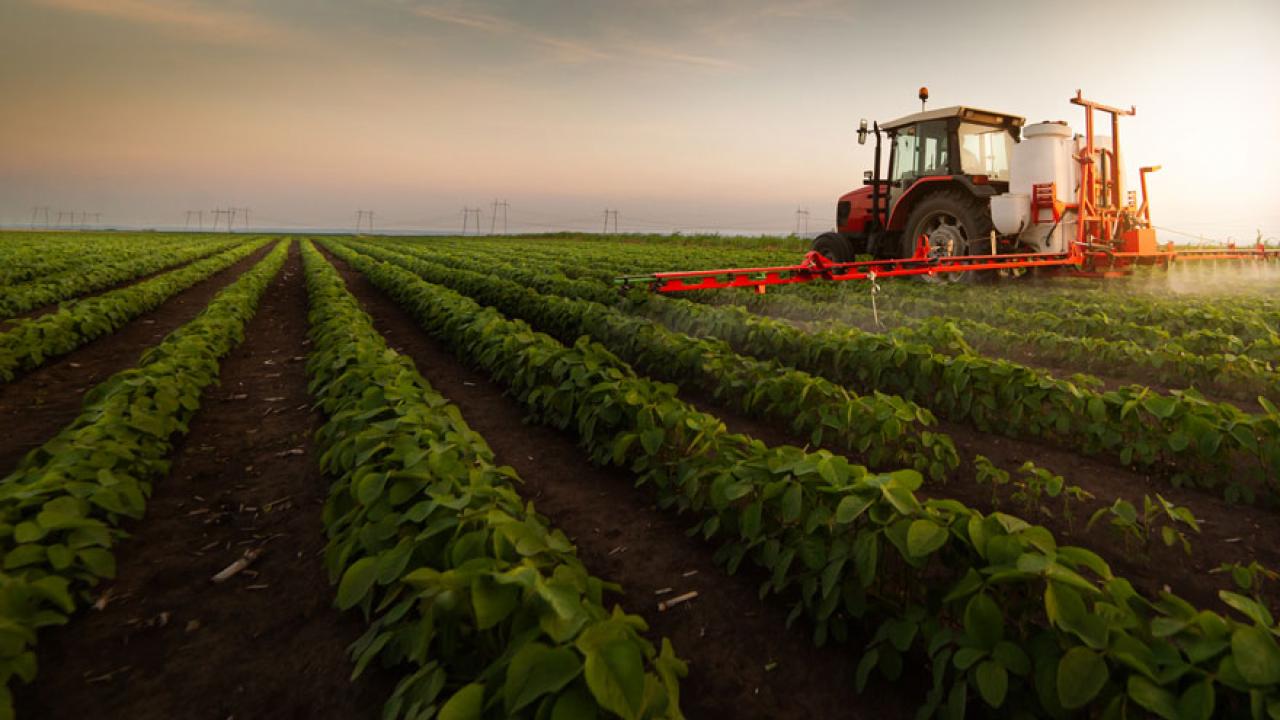This blog is an excerpt of an article originally printed in Forbes recently. It is written by UC Davis Graduate School of Management lecturer Suzy Taherian.
The HEROES stimulus bill, which has passed the House of Representatives, has many provisions for agriculture. It includes emergency assistance for sellers of livestock and poultry, animal disease prevention, dairy donation, and agricultural producers. The details are many pages in the text of the HEROES Stimulus bill, or Health and Economic Recovery Omnibus Emergency Solutions Act.
The government stimulus provides some disaster relief. Beyond the short-term need, the post-COVID world has created some opportunities for private investment to build the future of agriculture. There are investments in robotics, e-commerce, bio-stimulants, data management, and more. In an interview with Dr. Jon Hagler, the former Director of Department of Agriculture for the state of Missouri, he shared his views.

The ag economy, normally robust in economic downturns, has suffered significantly due to the negative impact of tariffs and COVID-19.
What is the current state of agriculture in U.S.?
The ag economy, normally robust in economic downturns, has suffered significantly due to the negative impact of tariffs and COVID-19. Look for the next round of stimulus to provide much needed relief for farm families. That said, solid investment opportunities in agriculture remain. Typically, investment in agriculture is counter-cyclical. For example, in the 2008 recession, the ag economy really took off. Investment follows return, if the stock market and housing are not doing well, investors look at other, more stable options. However, the COVID-19 crisis comes at a difficult time for American farmers. The past two years farmers have faced low prices, tariff restrictions and climate challenges. In addition, the current pandemic crisis has exposed some of the structural vulnerabilities. That said, given four out of four people eat, agriculture, in my opinion, is always a smart investment. Even in the current crisis and downcycle, there are significant opportunities for investment, particularly in the areas of e-commerce, robotics, data application, supply chain management and biostimulants.
What are investment opportunities today and in the future?
Given the importance of agriculture, the next decade or two will be an extraordinary time for ag investment.
- Local Supply and Regional distribution. Agriculture has become very efficient and consolidated in terms of food supply, processing and distribution. Yet, with COVID-19, we see the important role local and regional alternatives can play. Look for investment opportunities in ag supply chain, logistics and food distribution management to take off as retailers seek more regionalized and local alternatives that can continue to deliver in a pandemic.
-
-
- E-commerce. Likewise, e-commerce and e-grocery are also growth areas. Firms that take proven e-commerce technology and deploy it in agriculture will be smart investments in years to come. In the future everything from a farmer’s agricultural inputs to a consumer’s groceries will be available on e-marketplaces, lowering costs and providing more choices for buyers and sellers alike.
- Indoor Farming. Look for supply chains to shorten as retailers and consumers continue to place value on sourcing local. As a result, vertical and indoor farming in urban and suburban areas will continue to attract investment after the pandemic. Such facilities can also help offset planting shortages and disruptions due to climate change.
- Intelligence. Agriculture will become inexorably intertwined with advances in artificial intelligence of over the next two decades. Advanced robotics technology could help address both labor shortages and food safety concerns in packing houses and processing facilities and is already advancing in field machinery operations. Sensing technology will be increasingly available to farmers for moisture, soil samples, nutrient availability and uptake, tissue sampling, etc. The same will be true for sensors used with livestock. Sensing technology will allow farmers to make smarter, more efficient and more environmentally friendly decisions. Satellite imagery and drone technology will continue to provide farmers with reams of real time data.
- Data Management. Every increase in intelligence capability and utilization produces enormous amounts of raw data. Ag companies have been collecting planting data for example for many years. This is just the tip of the iceberg as the real fruit from this data will be in assemblage, analysis and synthesis of distinct data sets into real time decision making for producers.
- Biostimulants. The seed genetic revolution hasn’t been without controversy, but it has arguably produced great returns for ag business and increased yields for farmers. The next revolution in terms of inputs for farmers will likely occur in advanced nutrient management. Some of the most exciting products in decades are being developed employing beneficial microorganisms, fungi and bacteria to enhance root and plant growth. Given the rising costs of fertilizer and the environmental concerns of nutrient loads in critical watersheds, companies around the globe are pioneering more efficient and effective nutrient technologies, using natural substances and microorganisms, to produce significant gains in yield.
- Animal health. Animal health goes hand-in-hand with human health. Healthier animals which are more resistant to disease and grow more healthily will improve food quality and help hold down food costs. Companies such as those in the Missouri-Kansas Animal Health Corridor are focused on improving animal health in pets and our food supply. Look for those companies to continue to expand and produce a significant rate of return.
Full article here in Forbes.
